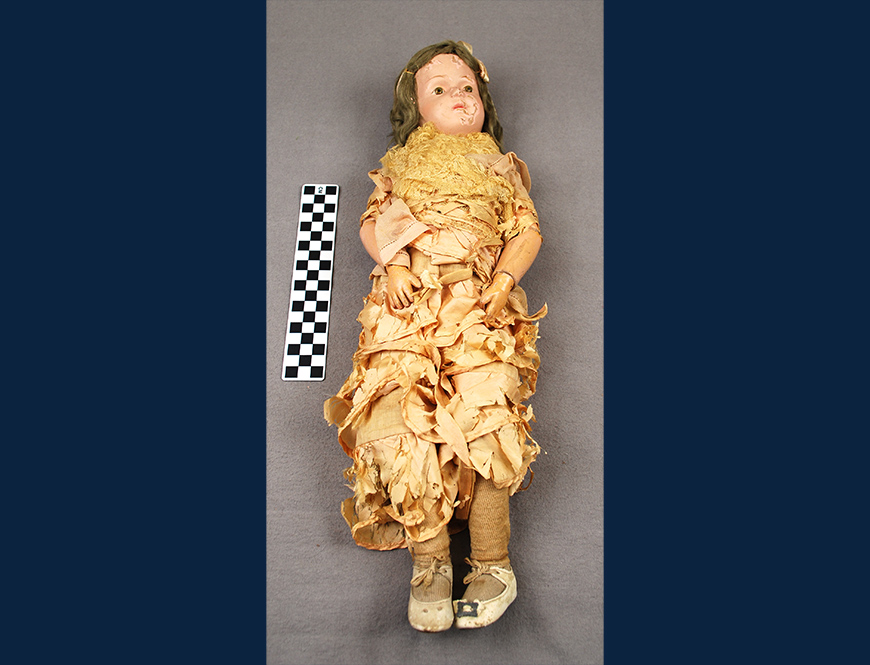This object is Schoenhut Wood doll made by German immigrant Albert Frederick Schoenhut sometime between 1911 and 1928. Albert Schoenhut started making toys with his father and grandfather in Göppingen, Baden-Württemberg, Germany. In 1866 Schoenhut immigrated to the U.S. to work for John Wanamaker’s Philadelphia department store. While at the department store Schoenhut repaired the glass sounding bars in the toy pianos that were imported from Germany. Schoenhut left the department store in 1872 to build his own company, The Schoenhut Piano Company, which is still making toy pianos today. Schoenhut made the sounding bars in his toy pianos out of metal to make the pianos more durable, instead of the usual fragile glass sounding bars that the toys have been made of previously. This sparked Schoenhut’s idea to make other popular toys out of more durable materials. One of these toys was the doll.
The Schoenhut Wood Doll was a different type of doll than was being made in the early 1900s. Dolls made of wood and springs were durable and able to be put into different positions due to the springs in the joints. This was unheard of at the time, because most dolls were made from bisque porcelain, also known as china dolls. The Schoenhut Doll was made of wood with either carved hair or a wig, with two holes in soles of the doll’s feet to help it stand, clothes, and a paper label on its back marking that it was a Schoenhut Doll. The first set of dolls to be made was the Humpty Dumpty Circus in 1903. The set first consisted of a clown and some accessories. Later acrobats, a ringmaster, and a lion tamer were added. The set also included a variety of animals including an alligator, bears, a buffalo, an elephant, giraffe, horses, a lion, a monkey, and many other animals both exotic and domestic.
Schoenhut and his company became popular and his toys were in demand all over the United States. The company did so well with the Humpty Dumpty Circus doll set from 1903 to 1907 that in 1911 Schoenhut got a patent for jointed wooden dolls, the “All Wood Perfection Art Doll.” These dolls were so life-like at the time that they became even more popular than the Humpty Dumpty Circus set and other toy companies from the U.S. and Europe bought them to sell, even in Schoenhut’s home country Germany. The dolls outfits followed the fashion trends of the day and eventually had their own designer. The Schoenhut dolls were the Barbie dolls of the early 20th century.
Albert Schoenhut died the year after he got the patent for the “All Wood Perfection Art Doll.” His six sons (Albert, Gustav, Theodore, William, Harry, and Otto Schoenhut) took over the company after his death and the company did well for a number of years. However, like many other companies, it was hard for the company to flourish during the Great Depression. After the Depression, Albert Schoenhut’s youngest son Otto and grandson George tried to rebuild the company to its glory days by opening the O. Schoenhut Company and manufacturing the Pinn Family Dolls. But this did not last long and the company eventually was sold to Frank Trinca. The company was kept in the Trinca family with Len and Renee Trinca and the company name was changed back to Schoenhut Piano Company and returned to selling just toy pianos and other instruments.
